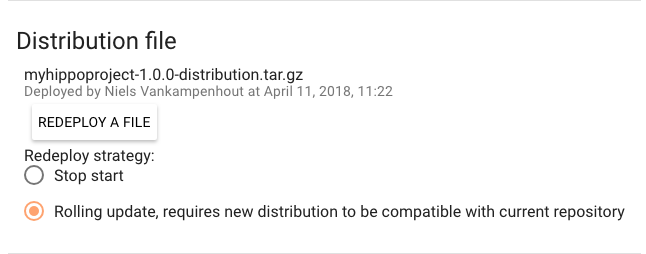Use Rolling Updates
Introduction
Goal
Redeploy a backward-compatible distribution without downtime using the rolling update method.
Background
When redeploying a backward-compatible distribution in a Bloomreach Cloud environment, there are two available methods:
- Stop-start
- Rolling update
By default, redeployment is done using the stop-start method which will first stop all existing containers before starting new containers with the new distribution. This is the most reliable option because it avoids potential backward-compatibility problems such as two different versions communicating with the same database.
However, the downside of the start-stop method is a downtime period. When redeploying a backward-compatible distribution, such a downtime period can be avoided by using the rolling update method instead of start-stop. A rolling update will start a new container, waits until it is ready to serve traffic, then stop an old container. This process is repeated until all old containers have been removed.
Instructions
- Make sure that the new, to-be-deployed, distribution is backward-compatible with the old, currently deployed, distribution.
- In Mission Control, select the environment your want to redeploy a distribution in.
- Select the Details tab.
- Under Distribution file, select Rolling update.
- Click on Redeploy a file.


